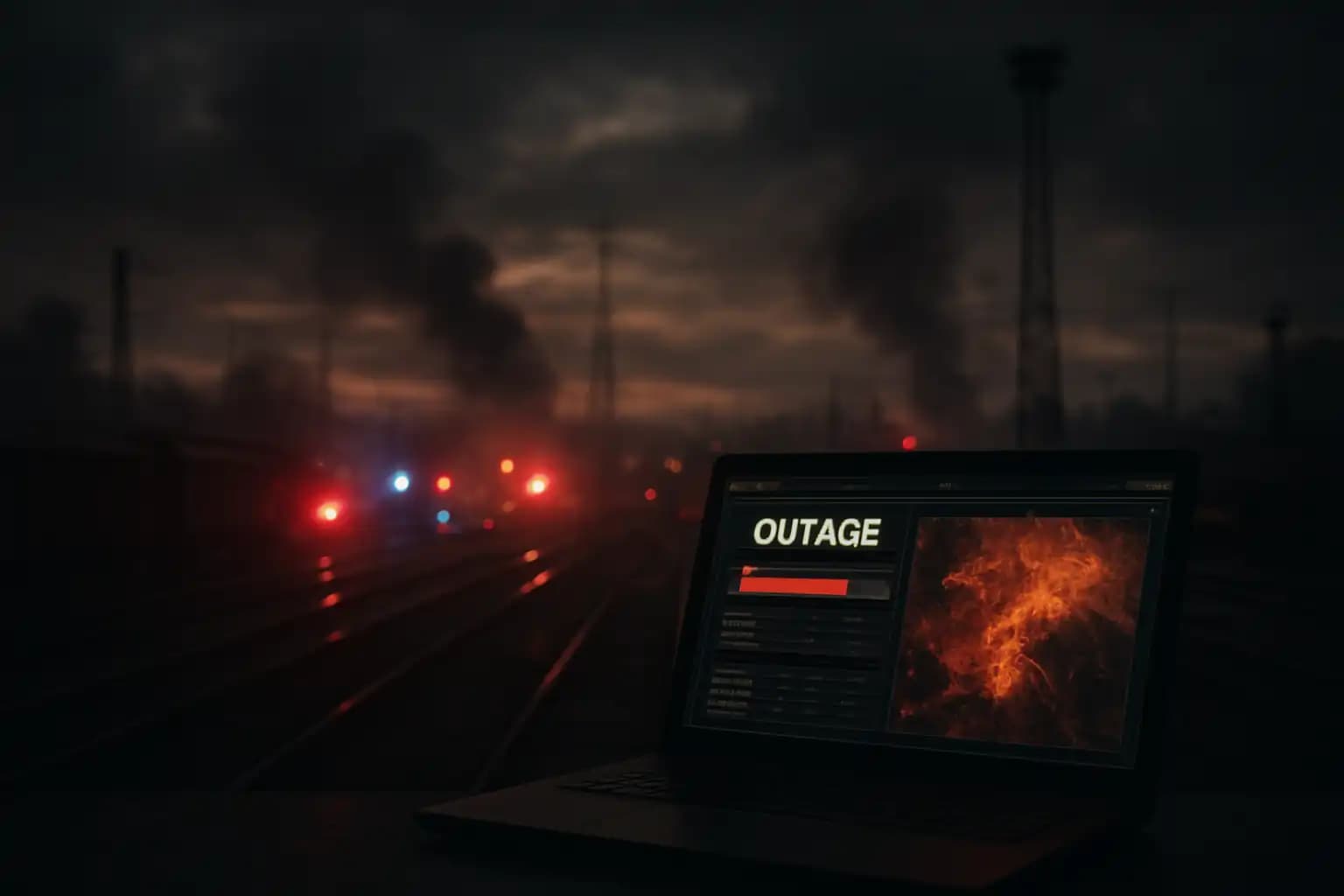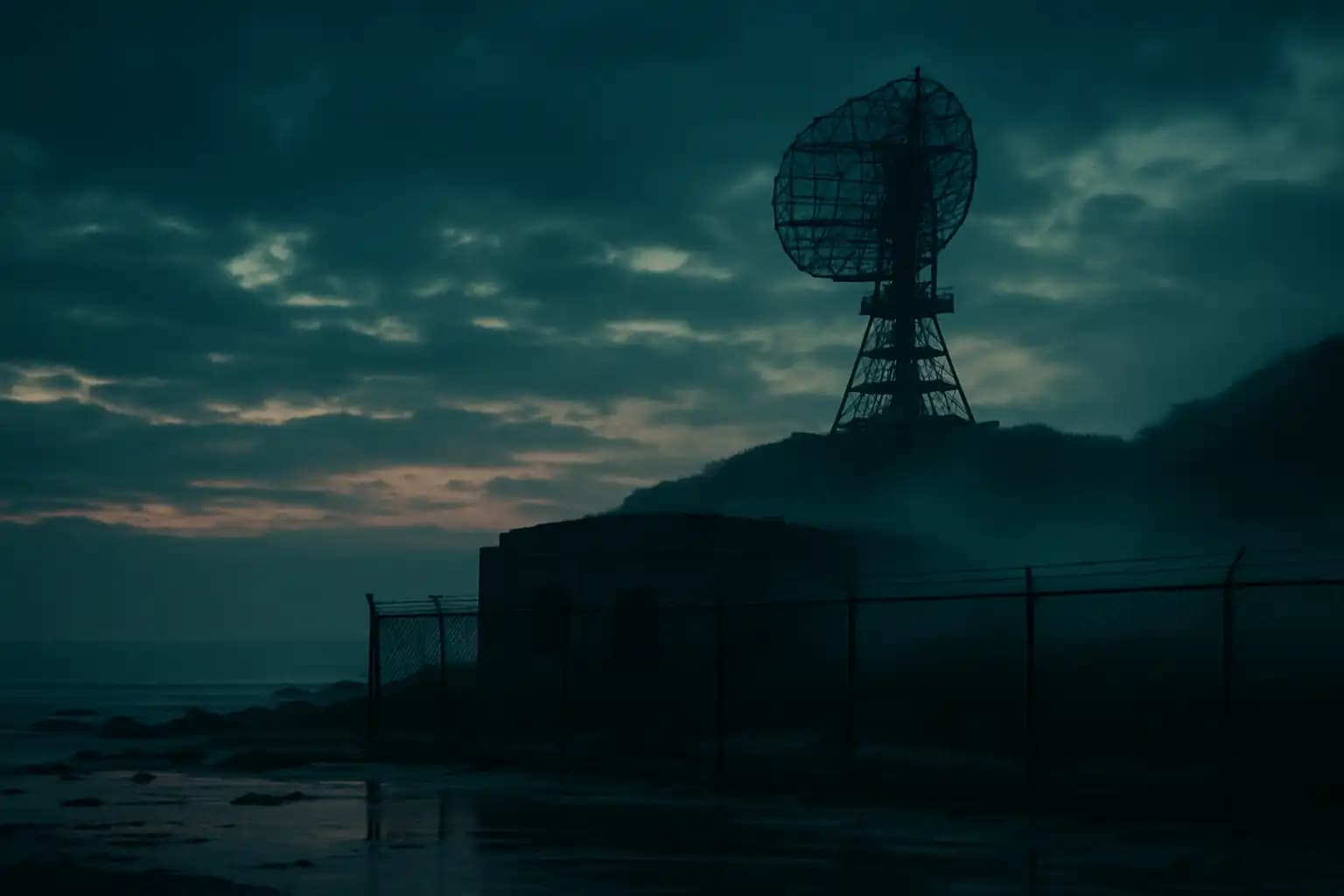On November 18, 2025, a configuration error at an internet infrastructure firm triggered a global outage, taking X, ChatGPT, and hundreds of other services offline for several hours. Close in time, investigators and open-source monitors documented multiple explosions and fires at Russian energy and military sites during mid-November, igniting a separate wave of geopolitical alarm. Simultaneously, social media buzzed with unverified claims of an H5N5 human infection—an allegation that rapidly fueled fear more effectively than verified facts could spread.
The interplay of network fragility, military strikes, and biological rumors illustrates a contemporary reality: technological failures and social contagion amplify each other. To respond effectively, officials must analyze each signal on its own terms—evaluating telemetry, forensic evidence, and where rumors distort the narrative.
Cloudflare outage November 18, 2025: the technical fault that felt like a global blackout
Cloudflare’s post-incident report indicates the outage began at 11:20 UTC on November 18, 2025, and was largely resolved by 14:30 UTC. The company attributed the disruption to an automatically generated configuration file used by its Bot Management subsystem that exceeded the expected size, leading to software crashes in the traffic-handling stack. Cloudflare described how a generated feature file—part of its machine-learning process for classifying traffic—exceeded an internal limit, preventing many of the firm’s proxy processes from routing traffic normally (Cloudflare incident report, Nov 18, 2025).
Security and network analysts emphasized the outage’s systemic consequences. Observability vendors recorded dozens of distinct global outage events during the subsequent weeks, and the availability of collaboration apps displayed sharp regional variance. Network World cited telemetry from ThousandEyes and others documenting large-scale service interruptions during the early- to mid-November period. Analysts warned that a single provider’s outage can create backlogs and partial failures even after primary routing is restored (Network World, Nov 11, 2025).
Explosions across Russia mid-November 2025: what reporting and imagery confirm
Between November 4 and November 14, multiple news agencies reported explosions, fires, and air raid warnings across several Russian regions. Reuters documented a heavy wave of Russian strikes on Ukraine from November 13 to 14, noting reciprocal Ukrainian drone and missile activity that Ukrainian officials claimed struck oil terminals, depots, and air-defense facilities within Russia. Eyewitness footage and local reports described fires at Novorossiysk’s Sheskharis oil terminal and detonations at ammunition storage sites, as authorities issued shelter-in-place alerts and reported infrastructure damage (Reuters, Nov 13–14, 2025).
Open-source investigators and regional monitors published thermal imagery and videos showing large plumes and secondary detonations consistent with strikes on fuel and ordnance. While attribution for specific incidents varied, the pattern—attacks on energy hubs and depots, leading to local power outages and transport disruptions—aligned with operational goals of degrading logistics and revenue streams.
How outages and strikes interact with narrative contagion to create crisis theatre
Distinct events collectively produce a common psychological response: anxiety. The Cloudflare configuration failure highlighted how fragile global traffic routing remains when a single software fault affects a major CDN. Similarly, visible explosions and fires in Russia provided striking imagery that newsrooms and social platforms fueled into an escalating narrative. Together, these elements set the stage for apocalyptic claims—some suggested imminent nuclear risk, while others alleged a global internet shutdown linked to state actors.
Such narratives often outpace verification. In prior incidents involving symbolic transmitters and sabotage, observers amplified weak signals into definitive claims. For instance, similar rumor dynamics emerged earlier when the UVB‑76 shortwave “Buzzer” went silent, and forums assigned mythical significance to a local power outage; later, analysts urged caution until forensic work verified cause and effect (an archival case study).
H5N5 human-case rumors: how biological claims spread without verification
In the hours following the strikes and outage, social media buzzed with claims of an H5N5 avian influenza strain infecting a human. Reporting agencies found no immediate corroboration from major public health organizations. For context on the pathogen family and the challenges of early confirmation, refer to authoritative primers on avian influenza: zoonotic transmission is rare but plausible under close contact conditions, and public health confirmation requires laboratory sequencing and epidemiological tracing (avian influenza primer).
Unverified biological claims pose unique dangers; they can trigger panic behaviors—border closures, vaccine hoarding, and increased hospital pressure—even when later proven false. Public health authorities prioritize laboratory confirmation; meanwhile, rumor mills exploit fear. This dynamic mirrors how technological scares evolve into moral panics in other domains, as explored in long-form reporting on narrative operations and technological alarmism (a field report on narrative cycles).
What verified evidence tells us about escalation and systemic risk
Telemetry and forensic analyses reduce uncertainty. Cloudflare’s engineering report explains why the internet traffic fabric hiccuped on November 18: an internally generated file exceeded limits, causing crashes in routing software. This constitutes a software engineering failure with broad operational implications but no evidence of a coordinated external cyberattack. Separately, geolocated footage, thermal signatures, and official statements confirm multiple explosions in Russia’s energy and logistics nodes during November. These incidents impact supply and command resilience but do not, on their own, suggest imminent strategic escalation toward nuclear use.
Where signals conflict—claims of an H5N5 first human case, allegations of automated nuclear triggers, or suggestions that outages and strikes form a coordinated campaign—investigators should seek connected evidence: forensic timestamps, chain-of-custody lab results, intercepts, and multisensor corroboration. Without this chain, treat dramatic narratives as noise until proven otherwise.
Why this cluster of incidents matters and what officials should do next
These events matter for three reasons. First, they expose inherent vulnerabilities: a configuration bug at a major CDN can cause global disruption, reminding policymakers that internet resilience relies on diversity and stringent limits on single points of failure. Second, attacks on energy and transport nodes demonstrate how kinetic operations aim to inflict logistical and fiscal pain far from frontlines—an intentional strategy to erode endurance. Third, panic driven by rumors can create policy pressure that outstrips evidence, risking miscalibrated diplomatic or military responses.
Practical steps: enhance redundancy for critical CDN and DNS services; fortify substations, depots, and rail nodes identified as high-value targets; and establish rapid forensic lanes that combine open-source intelligence, satellite imagery, and laboratory confirmation to counter rumor proliferation. These measures should be accompanied by improved public communication: differentiate verified technical causes from speculation and publish forensic timelines swiftly to deprive rumor economies of traction. For related analysis on technological surprises and public reactions, see topical investigations on technological panic and model failures (a debate dossier and a failure catalogue).
How journalists and the public can avoid fueling escalation
Reporters should prioritize primary-source telemetry and official forensic releases over unverified social media clips. Analysts should triangulate: a timestamped outage log from a CDN, satellite thermal imagery of a strike, and a laboratory sequencing report together form a robust narrative; isolated claims do not. Citizens should pause before amplifying dramatic posts and consult authoritative channels for health or security advisories. Historical patterns reveal how swiftly false or premature narratives solidify into persistent myths; prior coverage of symbolic signals and public panic offers valuable lessons (archival breakdown and a cautionary experimental case).
Conclusion: verified disruption, unverifiable panic—and the work ahead
The November cluster combined a verifiable software-induced internet outage and a series of confirmed explosions with an unverified biological rumor. Each element is significant in its own right. The appropriate public response begins with disciplined verification, resilient engineering to eliminate single points of failure, fortified protection for logistics nodes, and rapid, transparent communication from health and security agencies. If institutions can implement these steps, they will mitigate both the technical and narrative contagion that frequently transforms trouble into crisis.
For readers seeking ongoing tracking and forensic updates, outlets that blend open-source rigor with institutional reporting provide the clearest route through uncertainty. For contextual reporting and deeper case studies on narrative amplification and technological surprises, consult investigative packages and long-form analyses on related incidents, or visit Unexplained.co for curated timelines and archival resources.




